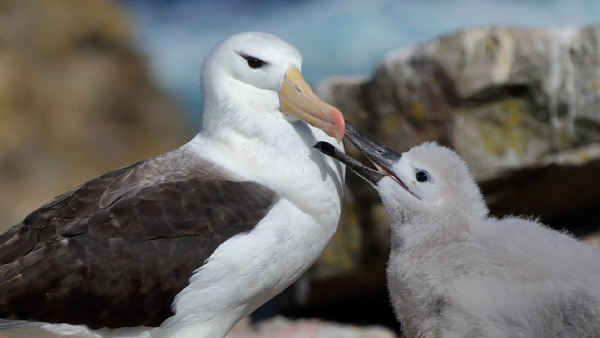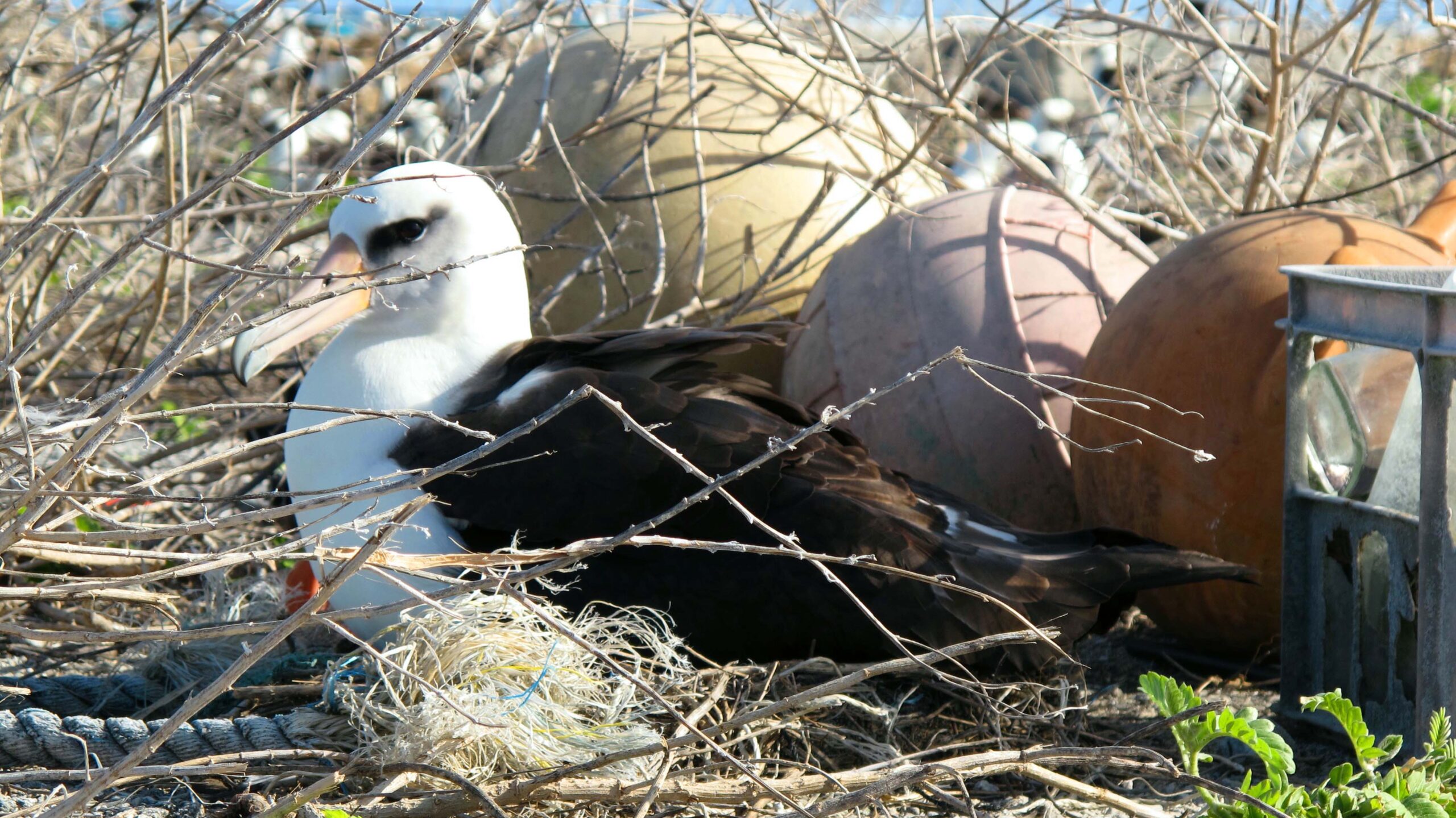An Update on the Amazing Albatross
Learn the latest on what’s putting this incredible seabird species at risk

Albatrosses (also known as “gooney birds”) are some of the most majestic and awe-inspiring seabirds inhabiting planet earth. Of the roughly two dozen species of the albatross family, the wandering albatross is the largest—boasting an impressive wingspan of up to 11 feet. Albatrosses inhabit much of the global ocean, including large swaths of the North and South Pacific. As such, they hold not only an important ecological niche but significant cultural and mythological roles in numerous island communities around the world as well. Many albatrosses live long, ocean-dwelling lives foraging on the sea surface and returning to land to breed. At more than 70 years old, Wisdom, the oldest known living bird in the world, is a Laysan albatross that hatched her most recent chick in February 2021. Unfortunately, albatrosses are also impacted by human activities, pollution or invasive species and some perish prematurely. More than 2/3 of albatross species worldwide are listed by the IUCN as vulnerable, endangered or critically endangered. It is therefore critical to understand the drivers underpinning the decline of these iconic animals.
Currently, plastic ingestion is considered a main driver of mortality for northern hemisphere albatrosses but is not listed as a key source of mortality for those in the southern hemisphere. To date, our knowledge about how anthropogenic activities and pollution impact the South Pacific population of albatrosses has been markedly narrower than our knowledge of the Northern population, and most studies on plastic ingestion are derived from necropsies of birds caught as fishery bycatch. While albatrosses have demonstrated an ability to regurgitate or excrete some amount of plastics in their boluses, some plastic items unfortunately become lodged in the body (depending on size and shape), creating permanent blockages, perforating organs or creating a false sense of “fullness” despite plastics having no nutritional value.

To determine if plastic ingestion is, in fact, a significant source of mortality for southern hemisphere albatrosses, several New Zealand and Australia-based authors recently investigated the cause of death in 107 specimens collected in their respective countries. In their study, authors found plastics were ingested by six individuals and were the direct cause of death for three. Among the plastics consumed were plastic straws, candy wrappers, balloons and plastic fragments. Through additional analyses, authors estimated plastic ingestion may be directly leading to mortality of up to 17.5% of nearshore albatross mortalities and should therefore be considered a significant threat to these already-imperiled populations. A 2020 study investigating plastic-related deaths across 80 marine megafauna species including cetaceans (e.g. dolphins and whales), pinnipeds (e.g. seals and walruses), sea turtles and seabirds found flexible plastics are responsible for the largest proportion of debris-related deaths. Other highly lethal items include plastic bags/sheets/packaging, rope/fishing nets (or ghost gear), fishing tackle and balloons.

The findings from these studies highlight the stark truth that there is a great need to better protect vulnerable ocean-dwelling species, like the albatross, from the threat of plastic pollution. You can help by asking your representatives to support the Break Free from Plastic Pollution Act, participating in a trash cleanup in your local area and reducing waste at home by taking our Trash Free Seas® Challenge. We need ocean-loving people like you to help us advocate for our environment, clean up trash and push for policies that help keep plastics out of seabirds and our ocean.
Need more albatross content in your life? Of course, you do. Learn more with our blog: Does the Albatross Really Mate for Life? The answer may surprise you!